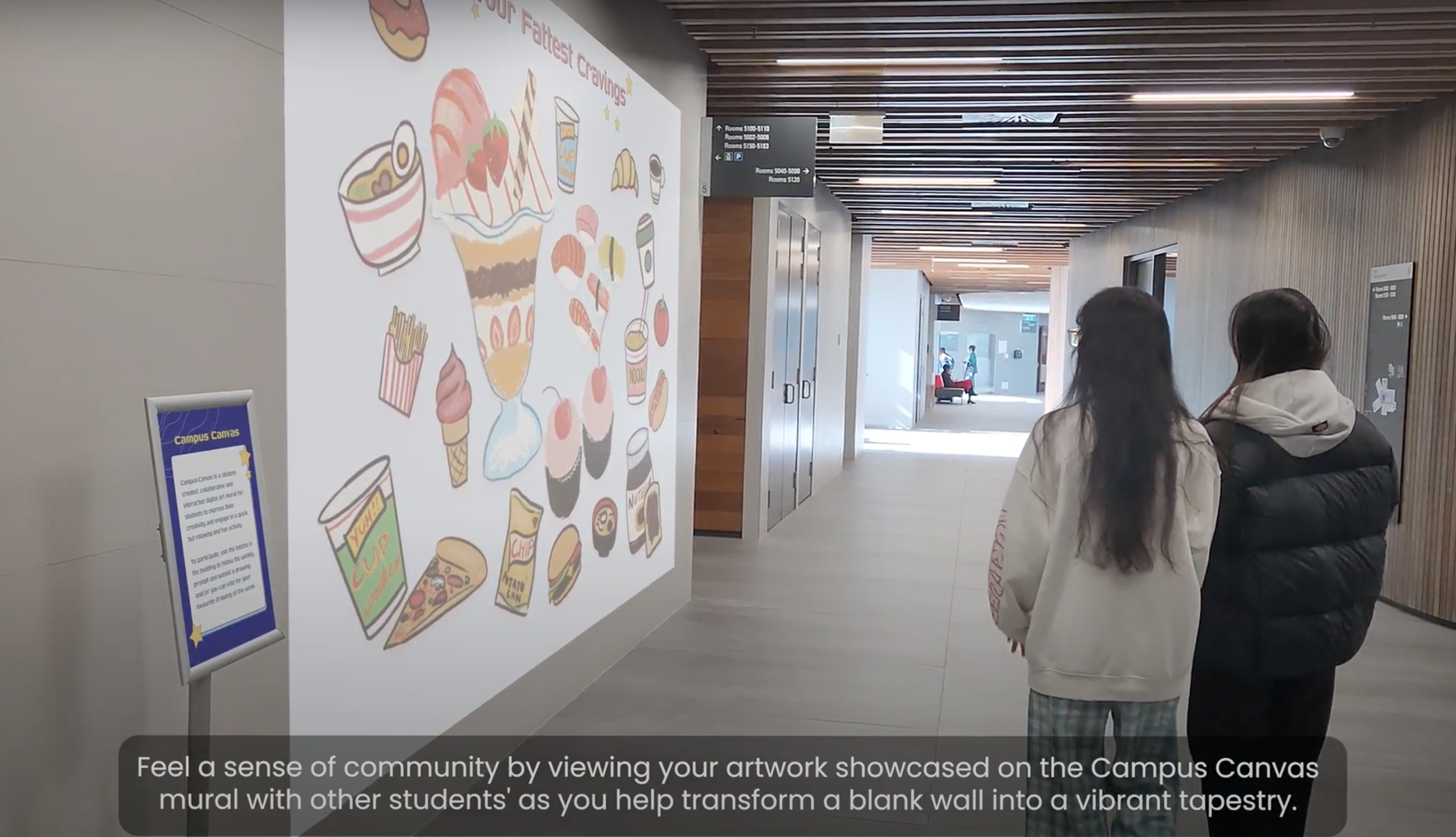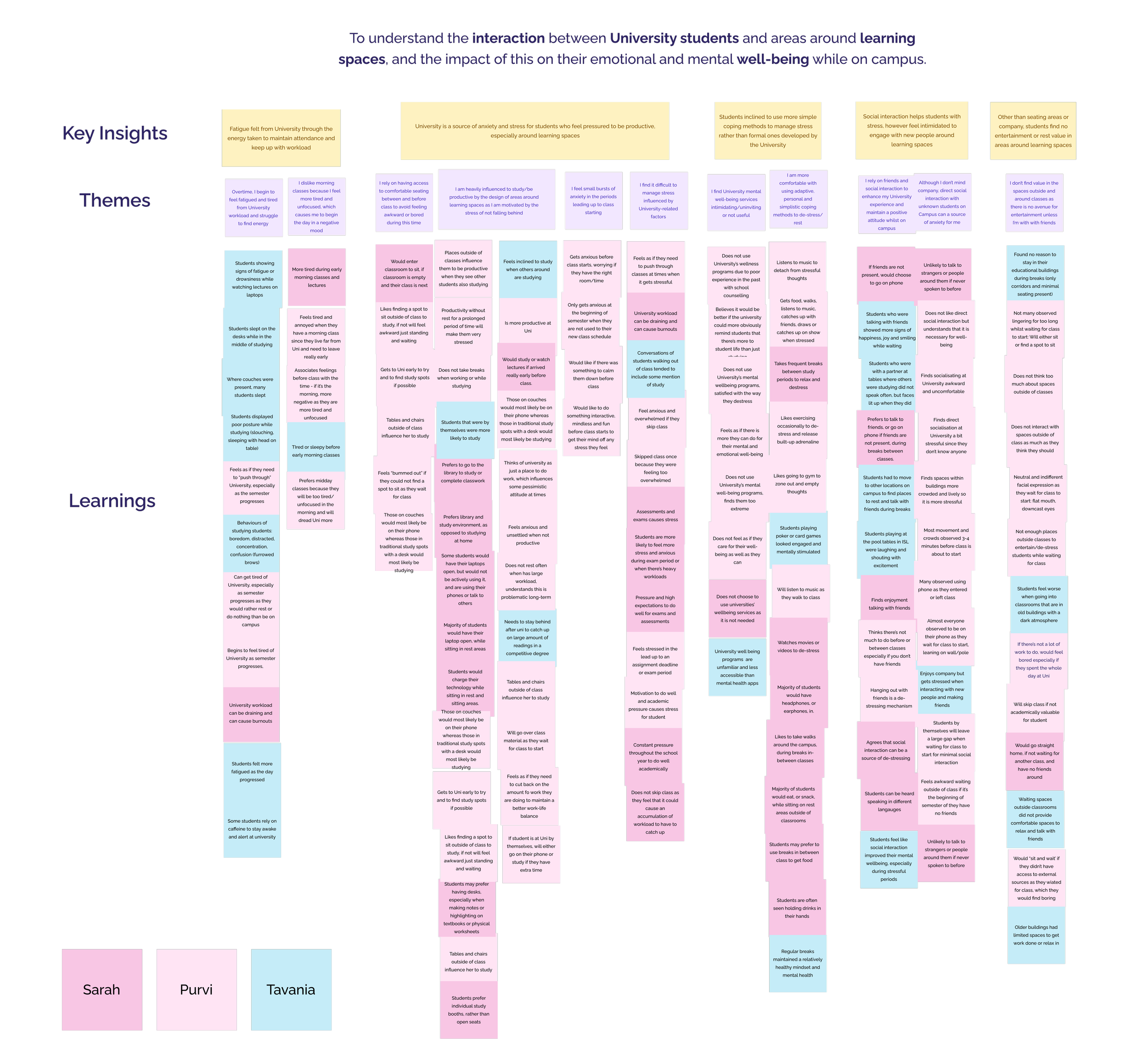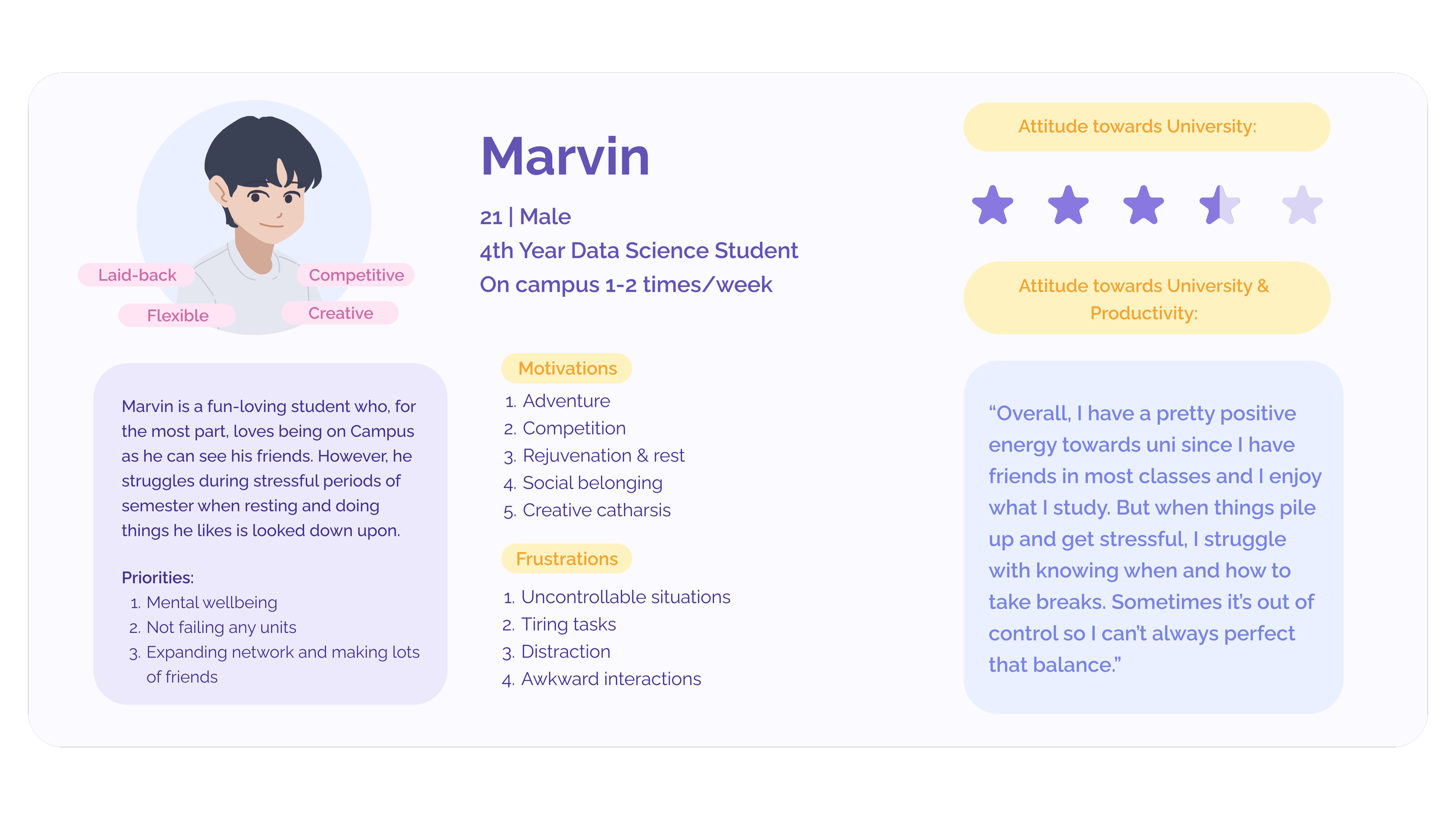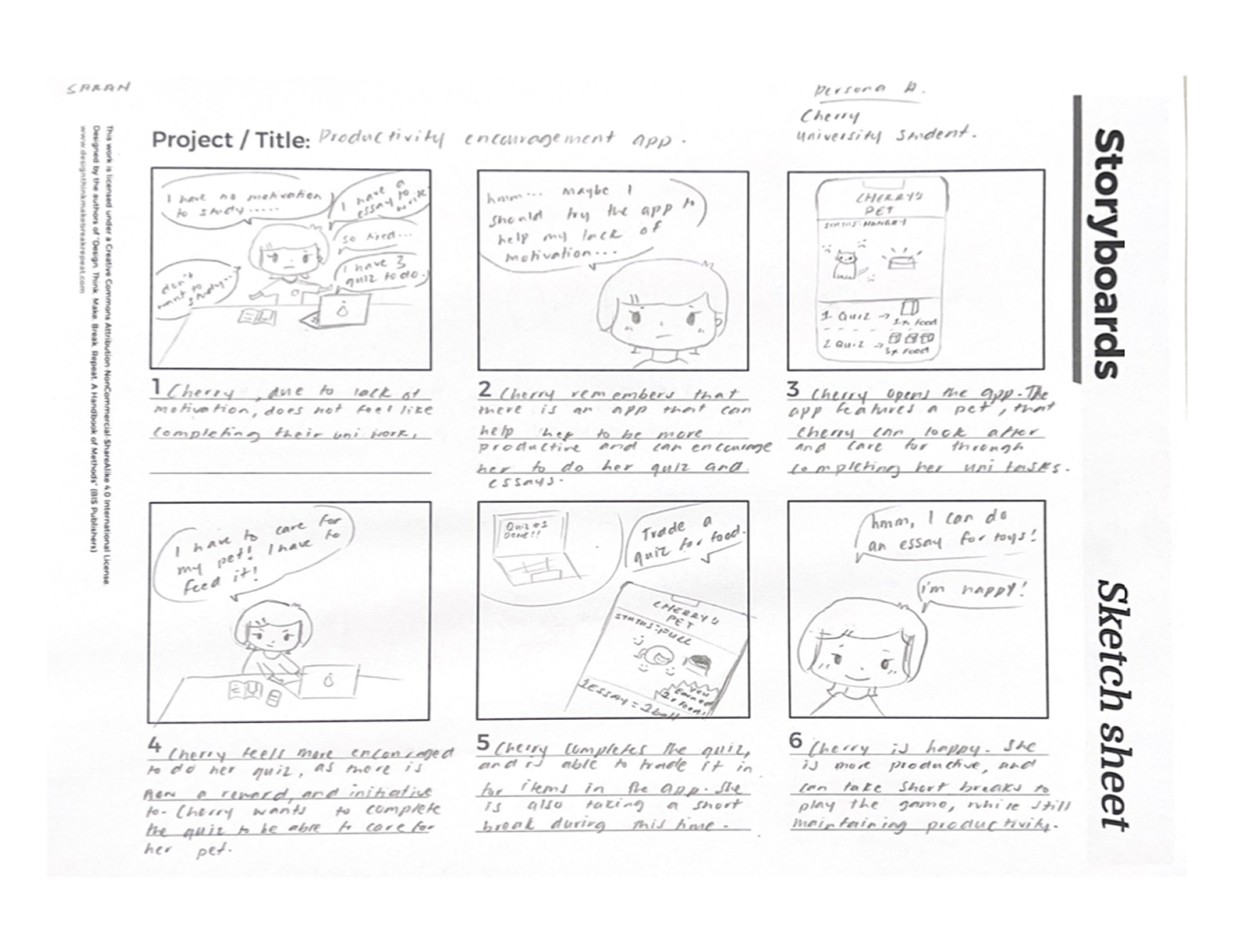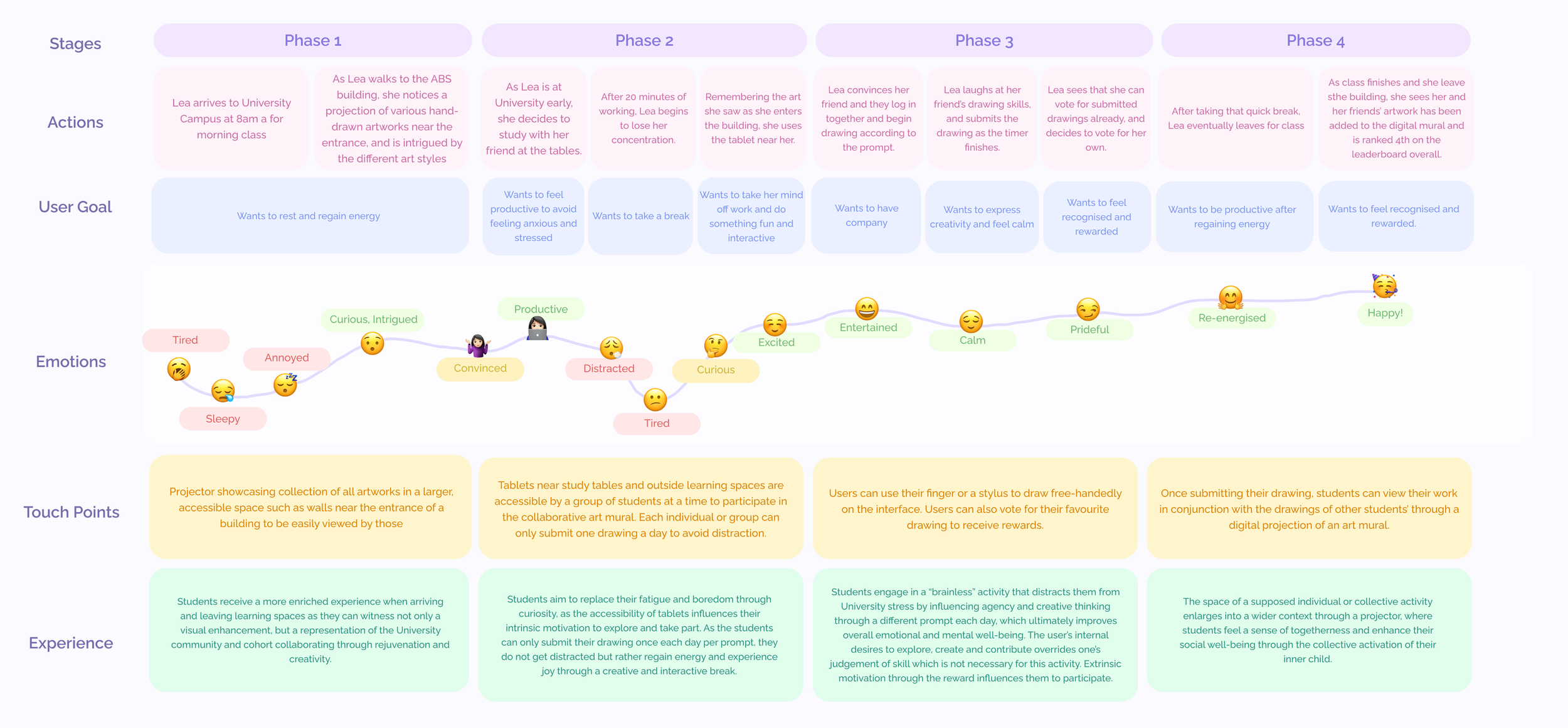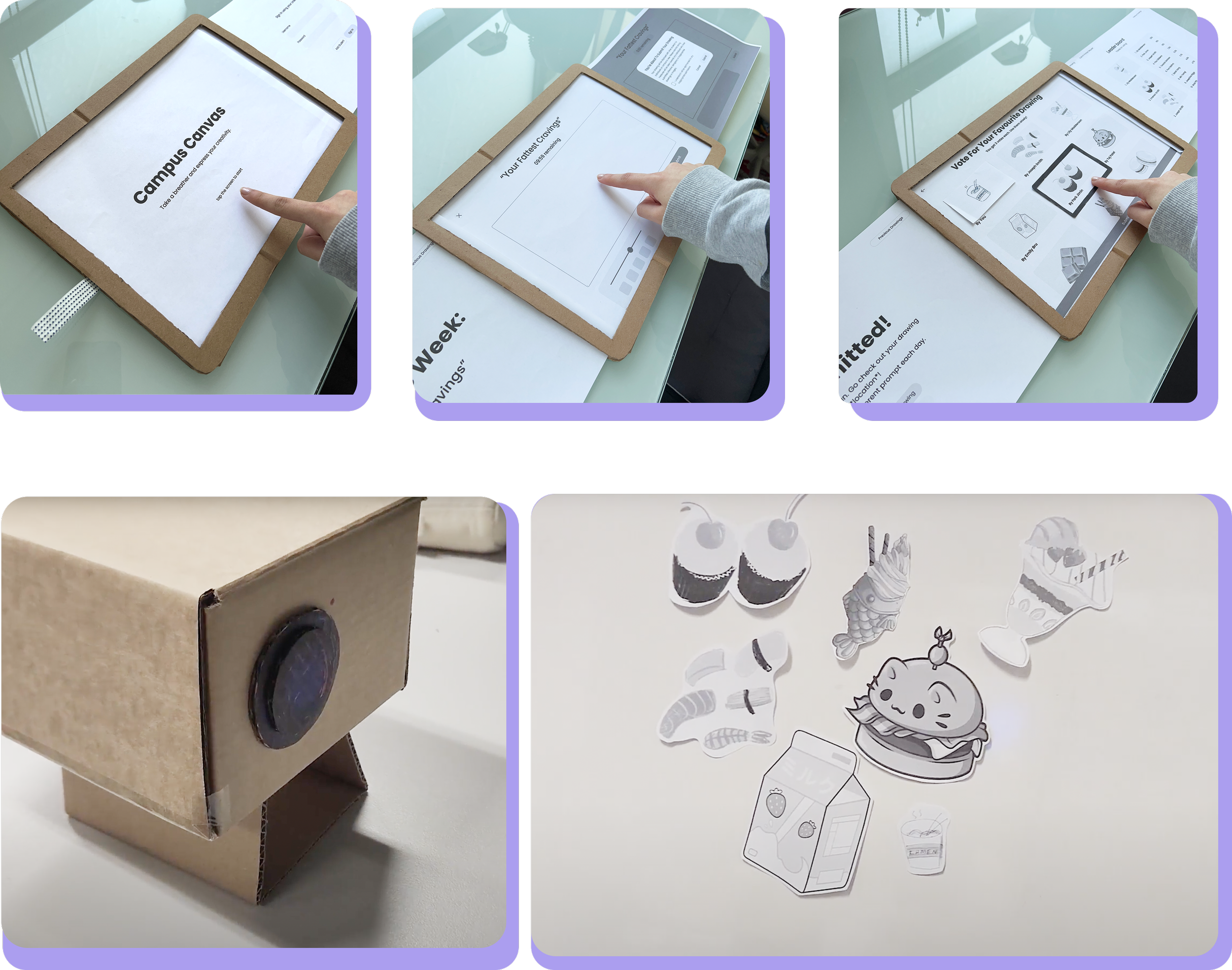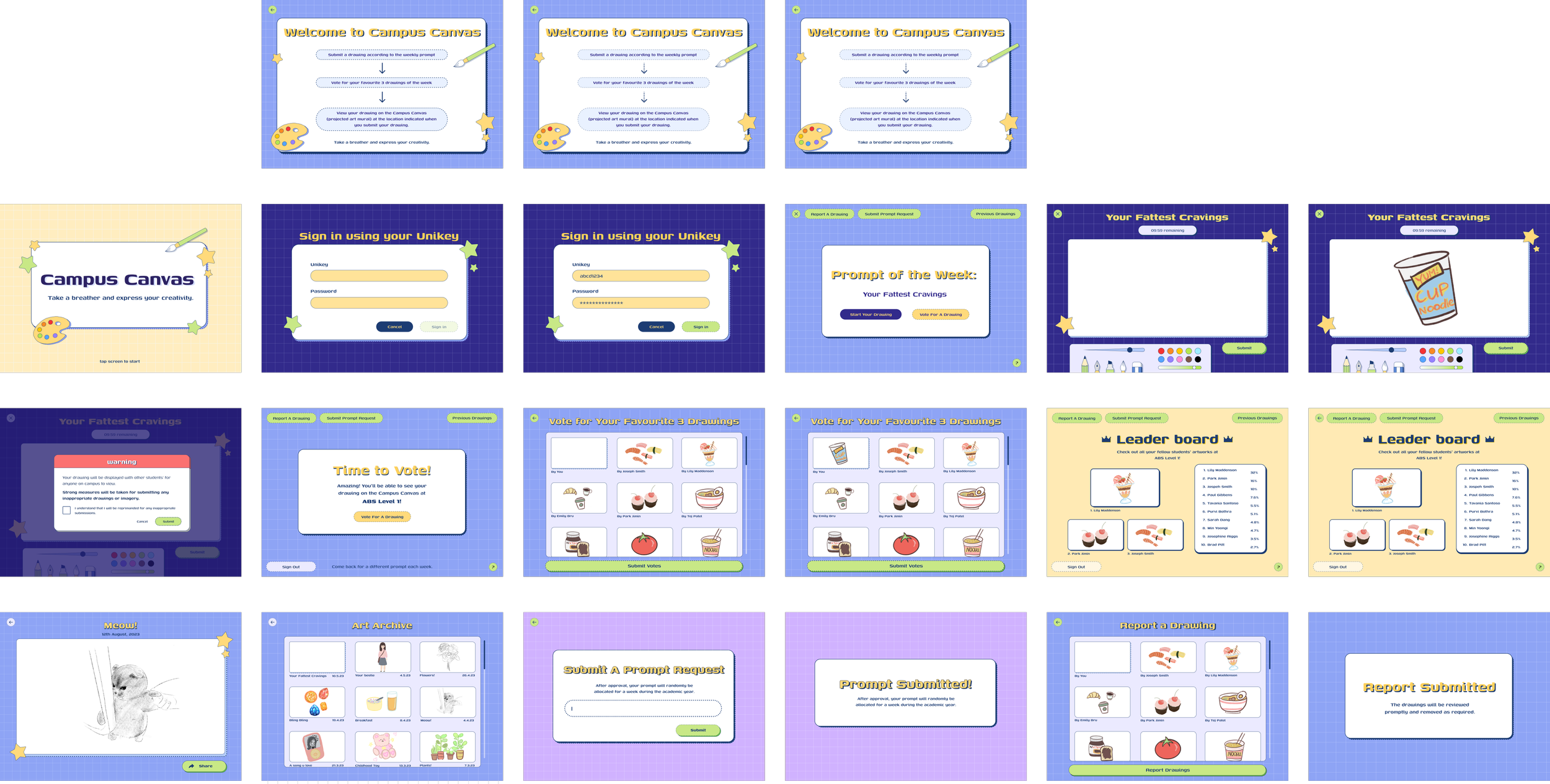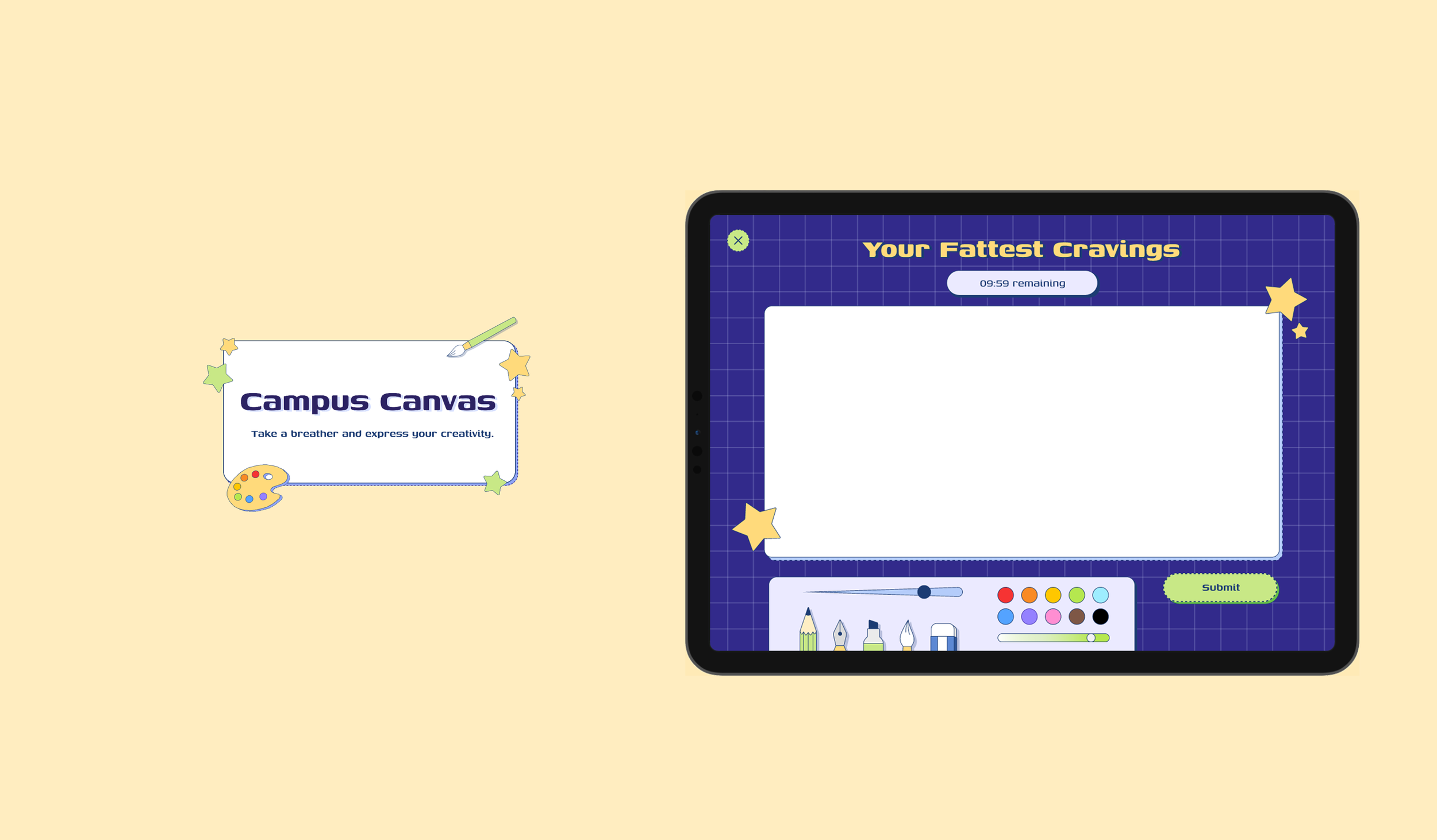
Campus Canvas
Overview
Campus Canvas is an interactive experience designed to foster creative rest and social engagement within university learning spaces. Through a blend of digital and physical interactions, it provides students with a low-pressure, engaging outlet to de-stress while encouraging meaningful social connections. Our research found that while students prioritise mental well-being, the serious atmosphere of learning spaces discourages interaction, often leading to isolation and disengagement.
By integrating playful and creative engagement within these spaces, we developed Campus Canvas to redefine how students interact with their environment. It promotes emotional well-being, encourages rest, and transforms university spaces into areas that support both productivity and personal balance.
Duration | February 2023 - June 2023
Role | UX/UI designer, UX researcher
Tools | Figma, Premier Pro
Problem Area
Background research
University life is inherently productivity-driven, with students constantly striving toward academic and career goals. However, unregulated productivity can lead to burnout, as continuous work without rest is counterproductive. The concept of toxic productivity culture has become increasingly relevant, reflecting a societal expectation that progress is only achieved through constant action - a belief rooted in action bias theory.
The campus environment plays a key role in shaping student well-being. Natural spaces help reduce fatigue, while structured indoor spaces enhance productivity. However, without intentional design that promotes balance, learning spaces may contribute to stress, exhaustion, and emotional strain rather than supporting overall well-being. Stuart Brown, a play therapist, emphasises that long-term deprivation of play and relaxation diminishes positive emotions, making it harder to experience joy and fulfilment. Addressing this issue requires reimagining university spaces to facilitate both work and well-being, ensuring that students not only stay productive but also thrive emotionally and socially.
User Research
Research objective
We explored how students interact with campus learning spaces and how this affects their mental and emotional wellbeing. Using a triangulation approach, we combined a questionnaire (110 responses), semi-structured interviews (8 participants), and contextual observations to understand behaviours, motivations, and barriers to engagement.
Key themes - such as time use between classes, the importance of rest and social interaction, and accessibility of learning spaces - were identified through empathy mapping and affinity diagramming, directly informing our design decisions.
Key insights
Insight 1 | Students feel pressured to be productive due to the serious atmosphere and abundance of seating areas and desks around learning spaces.
Insight 2 | Students inclined to use more simple coping methods to manage stress rather than formal ones developed by the University because they find them uninviting.
Insight 3 | Social interaction helps students with stress, however they feel intimidated to directly engage with new people around learning spaces because it’s a “serious” and productive atmosphere.
Insight 4 | Students find no entertainment or rest value in areas around learning spaces other than seating areas or company.
Through our key insights drawn from research, we were able to validate and enhance our original problem statement. We realised that the issue was not productivity itself, but the lack of balancing it.
We reconstructed the problem statement:
Students need an easy way to feel rested and increase positive interactions with other students around learning spaces, which currently causes stress and apathy and hinders their social and emotional well-being.
Personas
We developed a persona to represent our target users, ensuring our design addressed their needs, behaviours, and challenges.
Concept Ideation
The brief required an experience integrating physical, digital, and spatial elements, shaping our approach. Using mind mapping, Crazy 8’s, and storyboarding, we generated concepts focused on creative rest, gamifying productivity, and play/rest stations. To refine our four design concepts, we used the Harris Profile Decision Matrix, evaluating them against criteria aligned with the design brief to identify the most effective solution.
Chosen concept & User journey
Our strongest concept was a digital art mural, where students could submit drawings via campus tablets, which were then projected onto a shared mural. Users could also vote for their favourite pieces, encouraging creative rest and social engagement. To ensure clarity and feasibility, we developed a sketch flow followed by a user journey map that visually outlined key touchpoints and interactions throughout the experience - from submission to display.
Mid-fidelity and concept testing
We conducted mini concept tests with seven students, using low-fidelity sketches to gauge interest and refine our design. Users responded positively but raised concerns about inappropriate drawings, time constraints, and distractions. Based on this feedback, we added a submission warning, clearer call-to-actions for drawing or voting, and a central vote button to enhance engagement while maintaining focus.
High-fidelity testing and UI refinements
We moved into high-fidelity prototyping with a focus on creating interactive, visually consistent, and accessible designs. UI elements were informed by moodboards to maintain cohesive branding across digital and physical components. Key improvements included:
UI Contrast & Readability: Refined button colours for stronger visibility
Reducing Unnecessary Actions: Simplified navigation with an automatic return feature
Experience Flow: Streamlined transitions between digital, physical, and spatial touchpoints
Our final usability test resulted in an SUS score of 92.1, validating improvements in user experience and engagement. To showcase the full use-case scenario, we developed a video prototype, illustrating interactions with the art mural and projection system, ensuring the solution effectively met students' emotional and social needs.
Final high-fidelity prototype
After a final round of user testing and refinements, we incorporated constructive feedback to enhance our high-fidelity prototype, particularly in the UI of the digital component. While users responded positively overall, their insights helped us make final adjustments to improve clarity, usability, and engagement. With these refinements, we completed our final high-fidelity prototype, ensuring it effectively aligns with user needs and delivers a seamless, engaging experience.
Prototype and User Testing
High-Fidelity Video Concept
Campus Canvas
Playful Cities | University Campuses
Reflection
This project was a valuable learning experience, allowing us to apply UX design methods while integrating physical, digital, and spatial interactions.
User feedback was essential, guiding our iterations and uncovering insights that improved usability and engagement. Each round of testing helped us refine our concept, ensuring it aligned with student needs. Iteration was key, as we continuously adapted our design based on real user interactions, shaping it into a more intuitive and effective experience.
Lastly, we learned that designing for engagement should be both intentional and enjoyable. The broad brief gave us the freedom to create an experience that was not only functional but also interactive and fun, making the process both rewarding and impactful.
We received a high distinction for this case study ✨
